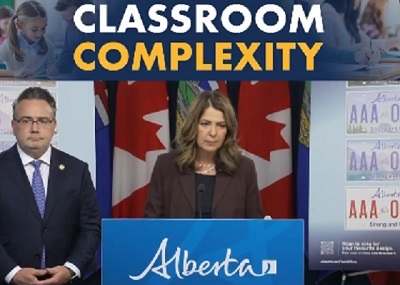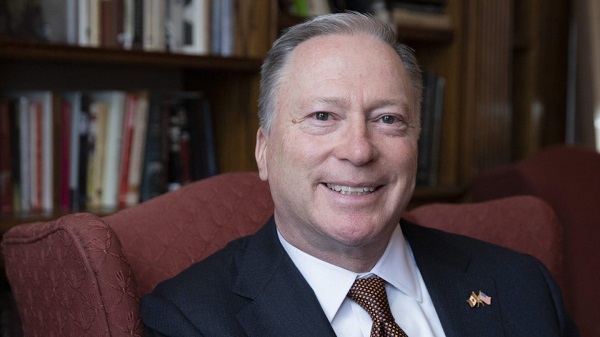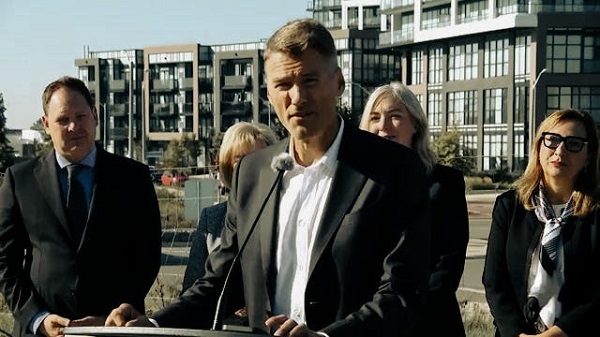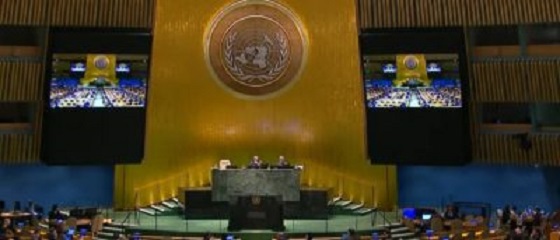Alberta
Royal Tyrrell Museum opens new stomping grounds

From The Province of Alberta:
The Royal Tyrrell Museum of Palaeontology’s 1,300-square-metre expansion offers visitors enriched experiences and services.
Come and get up close and personal with the Albertosaurus in the new Learning Lounge – an interactive exhibit and discovery area. The Learning Lounge features a life-sized bronze Albertosaurus skeleton and hands-on activities about Canada’s first known carnivorous dinosaur. The addition also includes improved spaces for education programs, meetings and conferences, and visitor amenities.
“When you drive into Drumheller, you enter an entirely different world. It sparks your imagination, and it is a magical place for children to experience. The Royal Tyrrell Museum is one of Canada’s most visited museums and I’m so proud that the Government of Alberta has invested in its future.”Leela Sharon Aheer, Minister of Alberta Culture, Multiculturalism and Status of Women
“Our government is proud to support the Royal Tyrrell Museum, as it provides opportunities for curious minds to learn about paleontological history and Alberta’s rich fossil heritage. I am thrilled that this investment has allowed the museum to expand its facility, reaffirming its leadership in paleontology and creating greater opportunities for all Canadians to learn about our prehistoric past.”Pablo Rodriguez, federal Minister of Canadian Heritage and Multiculturalism
“The Royal Tyrrell Museum of Palaeontology expansion project is an important example of government’s investment in key infrastructure that supports Albertans’ quest for information and brings our history to life. Infrastructure projects like the museum addition are crucial for supporting Alberta’s job creators and helping to grow our economy so we can build a prosperous future for all Albertans.”Prasad Panda, Minister of Alberta Infrastructure
“The Royal Tyrrell Museum provides a unique and valuable experience to all people lucky enough to visit. We are proud to be the home of such a wonderful cultural gem, and this new expansion will pay dividends to all people fortunate enough to visit for decades to come.”Nate Horner, MLA Drumheller-Stettler
The $9.3-million museum expansion was funded by the Government of Alberta ($5.7 million) and the Government of Canada ($3.6 million from the Department of Canadian Heritage).
Quick facts
- The Royal Tyrrell Museum of Palaeontology welcomes over 430,000 visitors per year from across the province, nation and around the world.
- Since opening its doors in 1985, the museum has welcomed more than 13 million visitors.
- The Royal Tyrrell Museum houses one of the world’s largest displays of dinosaurs and is Canada’s only museum dedicated exclusively to the science of paleontology.
- Joseph Burr Tyrrell discovered Albertosaurus on Aug. 12, 1884 while mapping coal deposits in the Drumheller area.
- Albertosaurus sarcophagus was the apex predator in Alberta 72.5 to 68 million years ago.
- Although it lived earlier in time, Albertosaurus is closely related to T. rex.
Alberta
Alberta taxpayers should know how much their municipal governments spend

From the Fraser Institute
By Tegan Hill and Austin Thompson
Next week, voters across Alberta will go to the polls to elect their local governments. Of course, while the issues vary depending on the city, town or district, all municipal governments spend taxpayer money.
And according to a recent study, Grande Prairie County and Red Deer County were among Alberta’s highest-spending municipalities (on a per-person basis) in 2023 (the latest year of comparable data). Kara Westerlund, president of the Rural Municipalities of Alberta, said that’s no surprise—arguing that it’s expensive to serve a small number of residents spread over large areas.
That challenge is real. In rural areas, fewer people share the cost of roads, parks and emergency services. But high spending isn’t inevitable. Some rural municipalities managed to spend far less, demonstrating that local choices about what services to provide, and how to deliver them, matter.
Consider the contrast in spending levels among rural counties. In 2023, Grande Prairie County and Red Deer County spent $5,413 and $4,619 per person, respectively. Foothills County, by comparison, spent just $2,570 per person. All three counties have relatively low population densities (fewer than seven residents per square kilometre) yet their per-person spending varies widely. (In case you’re wondering, Calgary spent $3,144 and Edmonton spent $3,241.)
Some of that variation reflects differences in the cost of similar services. For example, all three counties provide fire protection but in 2023 this service cost $56.95 per person in Grande Prairie County, $38.51 in Red Deer County and $10.32 in Foothills County. Other spending differences reflect not just how much is spent, but whether a service is offered at all. For instance, in 2023 Grande Prairie County recorded $46,283 in daycare spending, while Red Deer County and Foothills County had none.
Put simply, population density alone simply doesn’t explain why some municipalities spend more than others. Much depends on the choices municipal governments make and how efficiently they deliver services.
Westerlund also dismissed comparisons showing that some counties spend more per person than nearby towns and cities, calling them “apples to oranges.” It’s true that rural municipalities and cities differ—but that doesn’t make comparisons meaningless. After all, whether apples are a good deal depends on the price of other fruit, and a savvy shopper might switch to oranges if they offer better value. In the same way, comparing municipal spending—across all types of communities—helps Albertans judge whether they get good value for their tax dollars.
Every municipality offers a different mix of services and those choices come with different price tags. Consider three nearby municipalities: in 2023, Rockyview County spent $3,419 per person, Calgary spent $3,144 and Airdrie spent $2,187. These differences reflect real trade-offs in the scope, quality and cost of local services. Albertans should decide for themselves which mix of local services best suits their needs—but they can’t do that without clear data on what those services actually cost.
A big municipal tax bill isn’t an inevitable consequence of rural living. How much gets spent in each Alberta municipality depends greatly on the choices made by the mayors, reeves and councillors Albertans will elect next week. And for Albertans to determine whether or not they get good value for their local tax dollars, they must know how much their municipality is spending.
Alberta
Premier Smith addresses the most important issue facing Alberta teachers: Classroom Complexity

Premier Danielle Smith is posting this response to a media question about Classroom Complexity.
While Albertans are hearing a lot about capping class sizes, Premier Smith says it might be a much better idea to talk about capping “complexity”.
The challenges teachers face in today’s classrooms are recognized, and work continues toward practical solutions that address their concerns.
Achieving a fair and reasonable agreement that best supports students remains a top priority. pic.twitter.com/o4UCt7sDoU
— Danielle Smith (@ABDanielleSmith) October 16, 2025
-

 National1 day ago
National1 day agoDemocracy Watch Renews Push for Independent Prosecutor in SNC-Lavalin Case
-

 Alberta2 days ago
Alberta2 days agoEnbridge CEO says ‘there’s a good reason’ for Alberta to champion new oil pipeline
-

 Alberta1 day ago
Alberta1 day agoClick here to help choose Alberta’s new licence plate design
-

 Censorship Industrial Complex2 days ago
Censorship Industrial Complex2 days agoCanada’s privacy commissioner says he was not consulted on bill to ban dissidents from internet
-

 Bruce Dowbiggin2 days ago
Bruce Dowbiggin2 days agoLong-Distance Field Goals Have Flipped The Field. Will The NFL Panic?
-

 Business2 days ago
Business2 days ago“Nation Building,” Liberal Style: We’re Fixing a Sewer, You’re Welcome, Canada
-

 International16 hours ago
International16 hours agoHamas will disarm or die
-

 Business2 days ago
Business2 days agoFormer Trump Advisor Says US Must Stop UN ‘Net Zero’ Climate Tax On American Ships








